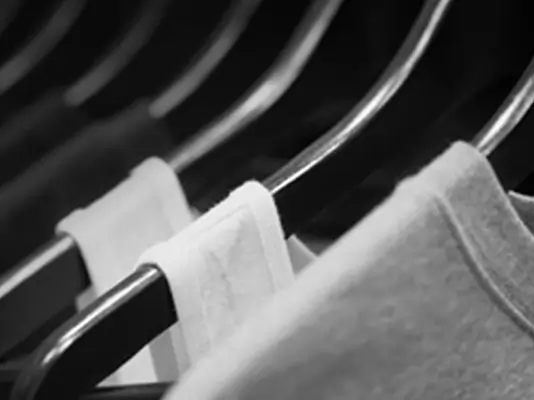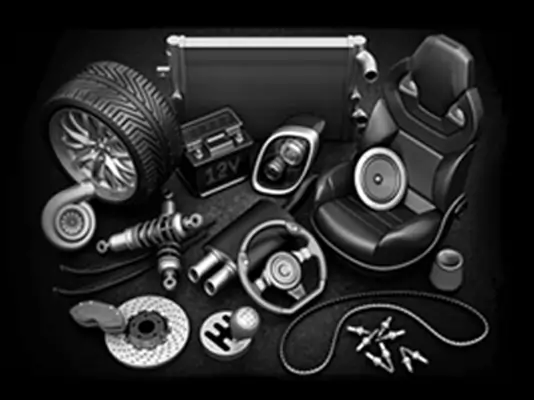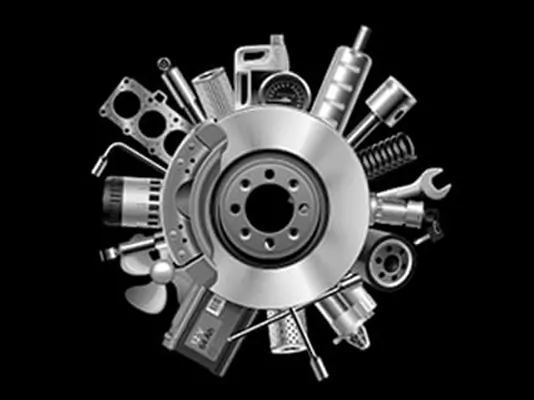Shifting gears in auto spare parts business
Achal Saran Pande, Santosh Mavely, Murali Krishna B, Ravindra Patki, and Puneet Kulraj

Covid-19 and the ensuing lockdown has had an unprecedented impact on the auto industry. It is notable for its simultaneous disruption of both demand and supply in this business. Even after the partial easing of the lockdown, the industry is facing unprecedented challenges. The uneven pace of resumption of activity across regions and sectors has affected all elements of the value chain.
Challenges on the supply side

Vendor issues: The abrupt shutdown of transactions in the entire auto industry choked cash flow all along the supply chain. This pushed many vendors, especially the smaller Tier II ones, into acute working capital stress. Even though the lockdown has been lifted now, with limited reserves, many of them may not survive, let alone have enough liquidity to restart buying of raw materials (RMs) and scaling up operations.
Even if the auto spare parts vendors overcome these issues, and plants become operational, the slightest violation of government- imposed regulations, or a single outbreak of Covid infection at the suppliers’ premises, could force the supplier to cease operations for some time. The auto spare parts vendors’ suppliers (Tier II and III) will also face similar challenges.
Labour shortage: To add to the troubles, many units are facing the problem that there is not enough labour to resume full operations. Among these, the lack of skilled workers is most acutely felt by companies, since work cannot be fully resumed without them. This is further complicated by the fact that auto spare parts companies have to enforce new health and safety guidelines on shop floors – stretching production capacity even thinner.
Logistics challenge: The shortage of manpower, coupled with the new health and safety norms, is also one of the reasons why depots, warehouses, and shipping options are not immediately accessible. The tightening of country/state borders has compounded the problems and upended this sector.
Since the entire ecosystem has been impacted, it will take a while for issues to get sorted out, and for supplies to be ramped up.
Challenges on the demand side

OEMs: The already flagging sales of most automobile OEMs dropped to nil during the lockdown, and is only gradually picking up. In spite of the resumption of dealer operations, the variability of demand auto companies are now facing is unprecedented. Consequently, the fast-changing production plans of automobile companies as a reaction to this catastrophe is creating a cascade of expediting, firefighting with Tier I auto spare parts suppliers. Scarce capital with the OEMs means that none of them will countenance being saddled with extra inventory, even if the suppliers created it at the behest of an original production schedule from the automakers! The only silver lining for Tier I suppliers seems to be that there is a new surge of nationalism, and pressure to relocate China sources to local sites. This may bear fruit in the form of some increased business for local suppliers from OEMs in the country.
Aftermarket: The aftermarket is another story altogether. Both OEMs and direct suppliers to the aftermarket are likely to see increased demand from the aftermarket, as the use of personal transport is going to increase with the perception of risk infection associated with public transport. Moreover, people will be more vigilant and proactive in servicing or repairing vehicles, as they would want to avoid breakdowns. This would also be a good time for OEMs and direct suppliers to gather back their market share from local auto spare parts manufacturers, as the working capital cycle and operating restrictions due to COVID would have put considerable gap in their supplies to the market.
What not to do
In such a scenario of uncertainty, the priority for any auto spare parts company will be to manage its working capital (more aggressively than ever), while protecting sales and profits for the year. Towards this end, there are three objectives that companies will focus on, and these are: 1) reduce inventory 2) reduce receivables, and 3) increase payable period. Given below are some steps that are normally adopted to achieve these three objectives; however, they can be highly detrimental.
Hand-to-mouth procurement of RM for monthly plans
Fear of increased cash outflow for procuring raw material for filling stock buffers without any guarantee of sales inflow may push many auto spare parts companies, at least in the near term, to adopt a ‘hand -to-mouth’ system of securing raw material – i.e., maintain little or no stock, and procure components only when needed for the monthly production plan. However, shifting to such a mode of functioning will mean that the lead time for supply of raw material and components will lengthen the total lead time for supply to OEMs/distributors. Considering the current uncertainty of supplies, customers will experience high variable lead times leading to delayed deliveries.
When supply fails from one or the other auto spare parts supplier in this manner, an OEM, already reeling under demand uncertainties, will be forced to change its production schedule. This means that whatever corresponding orders suppliers are currently manufacturing according to the original schedule given, will become irrelevant for the OEM. It may even refuse to accept those orders, and instead, expedite another order, forcing suppliers too, to change their production plans! Similarly, when there are shortages in the aftermarket of the supplier, the company sales teams too, would resort to expediting these. This will again necessitate changes in production plan for the Tier I supplier.
Trying to include only ‘confirmed’ orders in the monthly plan
Frequent changes in the production plans creates wastages in capacity and bloats inventory. To safeguard their interests, auto spare parts companies may seek confirmation of orders from the aftermarket, where these companies have some clout. Some large Tier 1 companies may also try to restrict OEMs from changing production schedules. (It is unlikely that an OEM will agree!). However, even if these efforts are successful, any such “confirmed” orders placed by distributors/OEMs, will be based on judgement or a forecast. Such estimates, inaccurate in the best of times, will be extremely unreliable in the upcoming speculative period. So, built-up inventory (at either the company’s end or the distributors’/OEMs’ end) may not match the actual consumption to any significant extent. Instead, quite contrary to the intent, excess inventory will choke space as well as the already limited working capital. Consequently, the agility and ability of the distribution channel/OEM as well as the company to procure ‘in-demand’ material will be badly compromised. Moreover, this way of planning puts the system’s reaction time at about 40 days or more. So, when both OEMs and sales teams insist that the auto spare parts company accommodate emerging demand, the precarious exercise of trying to cast monthly plans in concrete will have to be quickly abandoned.
Squeezing working capital of channel partners
With very little manoeuvring room in their own production planning, auto spare parts companies could try and gain some breathing space by improving receivables. For this, companies may either try to reduce the credit period offered to distributors or to demand upfront payment before material is made available to them. This may directly impede the liquidity of channel partners, who may then turn to those next in line in the supply chain – the retailers – and impose the same restriction on the line of credit of the retailers. Eventually, these decisions would deal a severe blow to product availability in the market. The result would be loss of sales for the company.
The auto spare parts company may also try to improve sales or liquidate excess inventory with volume discounts. Unfortunately, the result would be the same – loss of sales. Drawn to these discounts, distributors will tend to put all their money on fast movers. Subsequently, many would not be left with enough to buy stocked out items, thereby narrowing the company’s SKU range availability. With working capital blocked, their ability to ensure reach will also surely be compromised.
Delaying payments to vendors
Many auto spare parts manufacturers may also resort to using vendors’ cash to improve their own conditions. Short-term tactics such as ad-hoc delays in vendors’ payments, formal increase in payable period, delayed offtake of material made/supplied by them even after it is as per confirmed schedules, is likely to backfire. Vendors will also be facing cash flow issues and would prefer to serve customers who offer shorter payment cycles. Hence, such actions would again hinder the company’s raw material/component availability, and lead to loss of sales.

- Typical actions taken to manage working capital repercussion
Direction of solution
It does seem that whichever way an auto spare parts company turns, some pitfall awaits! However, a direction of solution can evolve if companies in this industry recognize that at this point in time, with erratic supply, labour shortage and the new social distancing norms, capacity is their constraint; and can find a way to effectively exploit available capacity, fully.
Most auto spare parts companies at this time will be struggling to get their act together. So, those that can stabilize production by aligning their supply chains quickly will gain advantage. They can not only serve existing customers seamlessly, but will also have the opportunity to sop up unserved demand and expand market share.
For stabilizing production, the main imperative is to decouple plants from uncertainties on the supply side, and from variability on the demand side. At the same time, to consolidate market share, no opportunity for sales should be missed due to either of the above. To ensure this, both OEMs and the aftermarket will have to enjoy fast, reliable, and seamless availability. The only way to ensure these dual objectives without jeopardising working capital turns, is to accelerate inventory flow while minimizing variability of flow in the entire supply chain. This is possible by adopting the “Pull” solution of manufacturing- i.e., a system that replenishes to buffers in warehouses for the aftermarket as well as the OEMs.
Pull solution for managing demand in the aftermarket
Implementing the pull-based replenishment solution means that auto spare parts companies should manufacture only to replenish one or few central FG stocking points based on actual sales at the distributors as observed on a daily basis. (To understand more generic dos and don’ts while manufacturing and distribution in a pandemic environment read pandemic resistant manufacturing and distribution.). Distributors will also be replenished frequently only to the extent of what is sold daily. This method of regular replenishment to distributors will not only prevent the need for them to try place orders periodically by guessing or estimating future sales, they will also not have to postpone buying or purchase in advance based on attractions of deals or higher credit limits. This method is also the best way to ensure that inventory received matches actual sales. That means, the distributors will not have capital locked in non-moving stocks. This will be a huge boon.

The big win for the company in this method of operations is that false signals of high/low demand from the aftermarket will not enter the plant. Due to the principle of aggregation, the central warehouse FG buffer will cancel out variations from distributors’ sales across the country. High sales of an SKU at some distributor locations will be offset by low sales at others. This would equalise the load on the plants. Furthermore, since the production plan is based only on consumption from the FG buffer, it (the plan) will remain undisturbed across a period. When the same plan is relayed to vendors, they too will enjoy a fairly uniform and stable demand.
Pull solution for managing demand from OEMs
Considering the fact that OEMs are facing uncertain demand, and they too face supply unreliability, expecting OEMs to offer stable production schedules or confirmed orders is unrealistic. Thus Tier I auto spare parts suppliers will have to adopt a system that can ensure high reliability at lower inventories in spite of unstable planning by the OEMs. At the same time, serving this demand should not upset production schedules of the plants.
For this, like in the case of orders from distributors, the solution is an FG buffer. Tier I auto spare parts suppliers have to maintain an FG buffer and supply daily requirements of OEMs from this buffer. The critical change from the typical way of operations is that the daily production plans will only aim to fill the buffers, and will not react to OEMs’ schedules. The question is whether this new method of creating FG will increase FG inventory and sap the already limited working capital. The answer is that it will not. In fact, the reverse is true. If all raw materials/components, are available at all times, usually, the assembly/ manufacturing time of any product for a Tier I supplier is 1-3 days. With such reaction times in production, an FG buffer of 10-12 days is sufficient to address any reasonable daily demand from the OEMs. This is lower than the inventory most companies are currently forced to maintain.

Pull solution for aligning suppliers
As discussed, in addition to decoupling demand, another necessary condition for seamless operations for a Tier I auto spare parts supplier is continuous availability of raw materials/parts for production. For this, the same system of replenishing to the raw materials/parts buffer has to be followed with Tier II suppliers or vendors as well.

If vendors (Tier II) can be persuaded and helped to maintain FG buffers, then Tier I auto spare parts manufacturers can maintain buffers sized to accommodate just the transportation time from Tier II vendor locations along with some safety, i.e., very low inventories of 3-6 days for local suppliers and about 10 days for suppliers outside the local area. Like Tier I suppliers, vendors too can use their buffer to insulate their production from demand uncertainties – maintain uniform load and plan raw materials required at lower levels.
Managing priority for production
In the current environment, load on the plant (which is the difference between target level of the FG inventory and the current stock across all SKUs) may often times be greater than the capacity on a given day. There has to be a priority system to decide what has to be produced in the available limited capacity. As the objective of the plant is to maintain availability of all items needed by distributors and OEMs in the FG buffer in the warehouses, the priority is decided by the penetration of the stock into this buffer. Lower the stock as compared to the FG SKU target level, higher is the priority. To simplify communication to the plant, target level is divided into three equal zones – bottom one-third is red, middle one-third is yellow, and top is green. Stock level moves between the three zones.

The stock level in red gets the first priority, followed by yellow and then green. The stock of the raw material is also coloured accordingly and communicated to vendors in the buffer penetration report every day. Vendors produce/supply the red stock first.
Dynamic buffer management
The long-term growth story of India is still viewed as intact. The current recessionary condition brought on by the country-wide lockdown is expected to improve in a few months. However, in the meantime, demand for different auto spare parts SKUs will fluctuate unpredictably. A mechanism is required to correct initial buffers to prevent stockouts and surpluses. Having a Dynamic Buffer Management system that gives an early signal to change the target levels based on trends in the rate of consumption can help maintain appropriate inventory levels. This would also arrest the vicious loop set off when capital is locked up in slow-moving inventory.
Provide proactive help to suppliers
The above solution will help in aligning manufacturing to the current demand patterns. But as mentioned earlier, due to current problems, vendors may not be able to stabilize their own production in a timely fashion, without help. So, it is in the interest of companies to recce their supplier base (particularly small and single source suppliers) to understand and help overcome obstacles for supplies, if any. For instance, with tight working capital and high receivables due to lockdown, the suppliers’ business continuity may be seriously jeopardized. In this case, if the company enjoys higher credit rating, it could facilitate a robust win-win-win ‘bill discounting’ mechanism with help from a financial institution. This will help vendors get paid faster without draining a company’s own cash. This will also help companies get priority in supplies.
Conclusion
Decoupling of demand and supply will not only ensure that production stabilizes quickly, it will also facilitate judicious use of capacity. Reduction in inventory in the supply chain will ease pressure on working capital. So, there will be no need to tamper with vendors’ payables or to squeeze distributors for early payments. At the same time, when capacity usage improves, the entire gross contribution will keep adding to the bottom line, steadily improving profitability. Offering better and more flexible service gives opportunity to claim higher share of business from OEMs who often source from multiple suppliers for the highest selling items. Therefore, released cash and capacity can be used to build strategic inventory or capacity buffers. With these strengths, auto spare parts companies can offer guaranteed and reduced lead time, and eventually grab more orders and consolidate market share.







